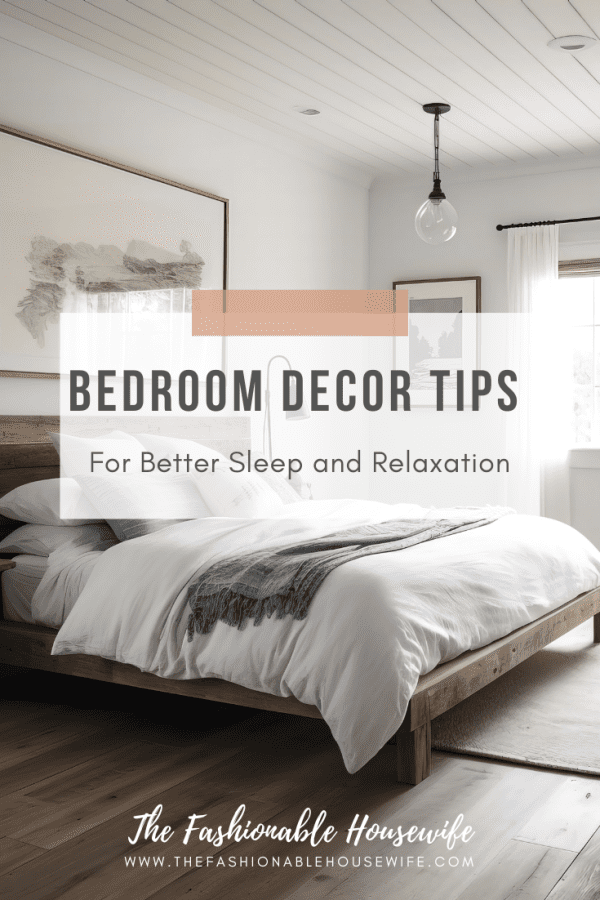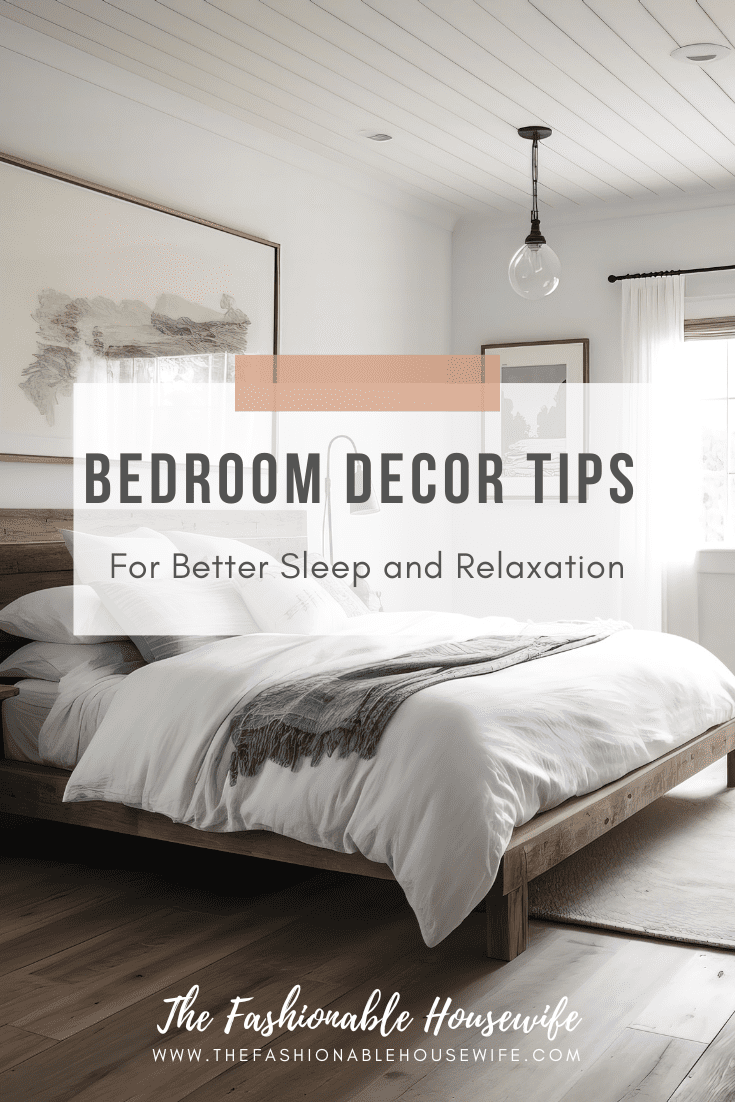Bedroom Decor Tips for Better Sleep and Relaxation

A well-designed bedroom is more than just a place to rest your head. It’s a sanctuary, a personal retreat that should promote deep sleep, comfort, and relaxation. The way you style your bedroom can have a surprising impact on your sleep quality, mood, and overall wellbeing. By carefully considering furniture, color theory, textures, and lighting, you can transform your bedroom into a calming environment that supports both restful nights and peaceful mornings.
Whether you’re starting from scratch or refreshing your current setup, these décor tips will help you create a bedroom that encourages better sleep and a more tranquil lifestyle. From choosing calming colors to investing in practical furniture such as small designer side tables, every detail can make a meaningful difference.
Choose a Calming Colour Palette
Color psychology plays a powerful role in how our minds and bodies respond to a space. Bedrooms should encourage rest, so opt for tones that evoke calmness and serenity. Soft neutrals, muted blues, earthy greens, and warm greys are particularly effective choices.
- Blues and greens: Reminiscent of nature, these shades can lower heart rate and blood pressure, encouraging relaxation.
- Warm neutrals: Beiges, soft browns, and gentle creams create a cocoon-like feel.
- Pale greys and blush tones: These add a modern touch while still remaining soothing.
Avoid overly bold or stimulating colours like bright red or electric orange, which can elevate energy and disrupt the restful atmosphere.
Prioritize Comfortable Bedding
Your bed is the focal point of the bedroom, and the comfort of your bedding plays a huge role in sleep quality. Invest in high-quality sheets made from breathable fabrics such as cotton or linen. Layering is also key—use a combination of duvets, blankets, and throws so you can adjust depending on the season.
Consider choosing bedding in calming tones to match your overall palette. Neutral sheets with subtle patterns or textures can add visual interest without overwhelming the space. The goal is to make your bed look and feel inviting, encouraging you to wind down at the end of the day.
Select Functional Yet Stylish Furniture
Furniture contributes not only to the look of your bedroom but also to its functionality. Keep pieces minimal and practical to avoid clutter, which can negatively impact relaxation.
- Bed frame: A sturdy, well-designed bed frame sets the tone for the room. Upholstered bedheads, for example, add softness and comfort.
- Bedside tables: Compact options such as small designer side tables are perfect for holding essentials like a lamp, book, or glass of water without taking up too much floor space.
- Wardrobes and dressers: Choose storage solutions that keep clothing and accessories organised, helping maintain a tidy environment.
When furniture is thoughtfully chosen, it creates a balance between style and practicality, making the room more enjoyable to spend time in.
Incorporate Natural Elements
Bringing elements of nature indoors has been shown to reduce stress and improve mood. This concept, known as biophilic design, is perfect for bedrooms. Consider the following:
- Plants: Even one or two potted plants can improve air quality and bring a sense of life to the space.
- Timber furniture: Natural wood tones add warmth and texture.
- Natural fibres: Rugs, throws, and cushions made from jute, linen, or wool enhance the sense of calm.
Nature-inspired décor connects you with the outdoors, fostering a restful environment that encourages relaxation.
Optimize Bedroom Lighting
Lighting plays a crucial role in creating an atmosphere conducive to rest. Natural light during the day keeps you energized, while soft lighting at night helps your body prepare for sleep.
- Layered lighting: Use a combination of ceiling lights, bedside lamps, and floor lamps to provide flexibility.
- Warm light bulbs: Opt for warm white globes (around 2700K) instead of harsh cool tones.
- Dimmable options: Allow you to adjust brightness as evening progresses.
- Blackout curtains or blinds: Essential for blocking external light and improving sleep quality.
Avoid using bright screens before bed, and instead rely on gentle ambient lighting to wind down.
Keep Clutter to a Minimum
A cluttered bedroom can overstimulate the mind, making it harder to relax. A clean, organized space, on the other hand, promotes a sense of calm. Practical storage solutions such as under-bed drawers, multi-functional furniture, and well-designed wardrobes are worth considering. Decorative baskets and boxes can help keep everyday items tucked away while maintaining visual appeal. The aim is to keep surfaces clear and the overall design streamlined, allowing your bedroom to remain a sanctuary rather than a storage room.
Add Soothing Textures and Layers
Texture plays a subtle but significant role in making your bedroom feel comfortable and inviting. A mix of soft and tactile materials helps create a multi-dimensional, soothing environment.
- Rugs: Add warmth and comfort underfoot.
- Throws and blankets: Perfect for layering on the bed.
- Cushions: Varying sizes and fabrics can make the bed look cosier.
- Curtains or drapes: Fabric window treatments soften the space and block light.
By layering textures, you can achieve a look that is both stylish and cocooning, enhancing the room’s restful qualities.
Personalize with Purpose
While minimalism often works best in bedrooms, incorporating a few personal touches makes the space feel truly yours. Carefully choose decorative elements that bring joy without overwhelming the room.
Consider:
- A framed artwork or photograph that makes you smile.
- A favorite book or journal on your bedside table.
- A calming fragrance, such as a lavender candle or essential oil diffuser.
Personalisation should be intentional and minimal—choose items that contribute to relaxation and comfort.
Control Temperature and Air Quality
A comfortable temperature and fresh air are essential for good sleep. Overheating or stuffiness can lead to restless nights. To optimize your bedroom environment:
- Use fans, air purifiers, or humidifiers if needed.
- Keep windows slightly open when weather allows for fresh air circulation.
- Choose bedding materials appropriate for the season (lightweight in summer, heavier in winter).
These small adjustments can make a significant difference in how restful your sleep feels.
Create a Digital-Free Zone
One of the most impactful steps for better sleep is removing digital distractions from the bedroom. Smartphones, tablets, and TVs emit blue light, which can disrupt melatonin production and make it harder to fall asleep.
Consider leaving devices outside the bedroom or switching them to “do not disturb” mode before winding down. Instead, embrace screen-free evening rituals, such as reading, journaling, or meditation. By keeping your bedroom technology-free, you reinforce its purpose as a sanctuary for rest.
Ready to get started with these bedroom decor tips?
Your bedroom décor has the power to influence how well you sleep and how rested you feel. By choosing calming colors, investing in comfortable bedding, incorporating natural elements, and keeping clutter to a minimum, you can create a sanctuary that supports relaxation and wellbeing. Practical furniture, such as small designer side tables, along with layered lighting, soft textures, and personal touches, will enhance both style and functionality.
Ultimately, designing a bedroom for better sleep is about balance—combining beauty and practicality while prioritizing comfort and calm. With thoughtful choices, your bedroom can become a restful retreat that helps you recharge, ready to face each day with energy and clarity. Follow these bedroom decor tips for your a great night’s sleep!

